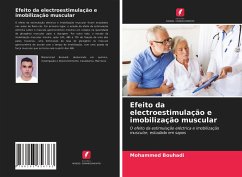
Muscular system of the horse
Versandkostenfrei!
Versandfertig in 6-10 Tagen
23,99 €
inkl. MwSt.

PAYBACK Punkte
12 °P sammeln!
High Quality Content by WIKIPEDIA articles! There are 3 types of muscle, all found within the equine: Skeletal muscle: Contraction of these muscles leads to the muscle pulling a tendon, which in turn pulls a bone. Moving a bone results in either flexing or extending a joint. Skeletal muscles are usually arranged in pairs so that they oppose each other (they are "antagonists"), with one flexing the joint (a flexor muscle) and the other extending it (extensor muscle). Therefore, one muscle of the pair must be relaxed in order for the other muscle in the pair to contract and bend the joint proper...
High Quality Content by WIKIPEDIA articles! There are 3 types of muscle, all found within the equine: Skeletal muscle: Contraction of these muscles leads to the muscle pulling a tendon, which in turn pulls a bone. Moving a bone results in either flexing or extending a joint. Skeletal muscles are usually arranged in pairs so that they oppose each other (they are "antagonists"), with one flexing the joint (a flexor muscle) and the other extending it (extensor muscle). Therefore, one muscle of the pair must be relaxed in order for the other muscle in the pair to contract and bend the joint properly. A muscle or muscles and its/their tendon(s) that operate together to cause flexion or extension of a joint are referred to respectively as a flexor unit and an extensor unit. Cardiac: muscle which makes up the heart. Smooth: muscle which makes up automatic systems (digestive system, for example).












